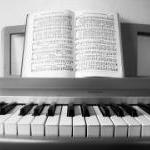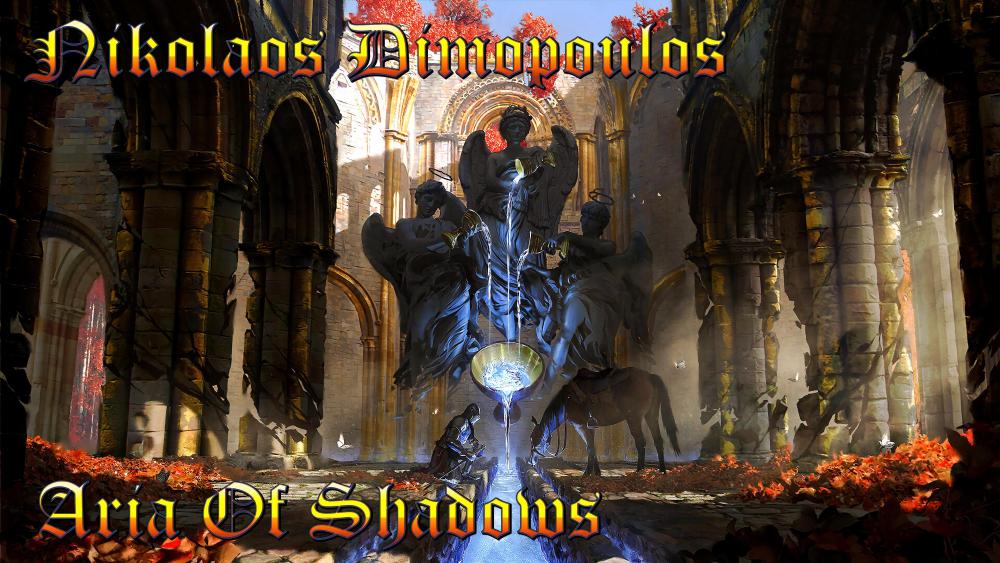Search the Community
Showing results for tags 'orchestra'.
-
Hello peeps, Merry belated Christmas and happy upcoming New Year. I recently wrote this work based on a popular theme that has been surfacing on Tik-Tok and Instagram. It usually appears on slow-mo reels or funny fails in general. I thought the theme had quite a bit of potential and decided to write a short orchestral fantasia based on it. I apologize if the score is a little hard to follow. I am planning to work on engraving after I receive more feedbacks. Thanke Truly Final Version + Animation
-
Hello everyone! I'm new to this platform. I'm a musician who likes to compose music in my free time, although I've never studied composition. Furthermore, I've already made some pieces, but I consider this to be my first "big" work. It's a work based on Bach's "Little Fugue in G Minor" (my favorite composer and piece). It's an incomplete work, it's missing (at least) one last part, which I thought would be a fast "movement" to finish the piece. I'd like to receive comments, criticisms, suggestions... to improve. I'm looking for comments of all kinds: musical, orchestration, stylistic... In this folder, there are the audio, the score and de video with audio+score: https://drive.google.com/drive/folders/1CZZP89RZ6g5gznB45ezyddqK6kdbKroV?usp=drive_link Thank you very much! Fantasia sobre un tema de Bach.mp3 Fantasia sobre la fuga.pdf
-
Hi everyone, I’m new here! I’ve seen a few other pieces of music shared here, and it seems like the perfect place for me to join in. I’m a French student, and I’ve spent 12 years studying piano at a conservatory. Recently, I’ve started composing, and I feel confident enough about what I’ve created to share it with you. Right now, I don’t have anyone around for active listening, so I have no idea how to assess the quality of my compositions. I’d really appreciate honest feedback (whether it’s theoretical or just based on your feelings) to understand where I stand and how I can improve. I hope you will feel as much emotion listening to it as I did composing it 😀 Thank you in advance for your time and your insights! The orchestral songs are Paper Symphony part 1&2 only (the others are in others style)
- 2 replies
-
- 1
-

-
- soundtrack
- symphony
-
(and 2 more)
Tagged with:
-
Hello This is the third part of the orchestral suite, although I am not at all sure it is a suite, but rather single works. I'll have to listen to them in one go to see if they add up for me. In fact in this last part there are some things that are more advanced in stylistic time. It consists of the following parts: A1 Theme in Gm B1 Chromatic sequence from Gm to Amaj A2 Theme in Dm C1 and C2 Intermediate part polyrhythmic! B2 Chromatic Sequence from Fm to Gmaj D1 and D2 Final Adagietto in G - ending in Emaj The chromatic sequences are inspired by romanticism (Chopin used them a lot). The polyrhythmic part took me a while to get it right in the editor, but when something gets stuck in my head... It sounds quite impressionistic, to me. Anyway, if it makes someone spend a few pleasant minutes, that's fine. I didn't want to make something long, or repeat the same parts, which I don't like at all.
-
Untitled score.mp3 Untitled score.pdf Hey all! New here, so bare with me ... lol To give a short description of the person who's requesting help here, I was previously a theory and performance student for Benedict College in SC. I dropped out in 2018, and only within the last few months have I started to get back into messing around with music theory and composition/arranging. I always did it as sort of a hobby, and have not had instruction in any capacity, other than my abilities to read and comprehend a music score, and my own learning as an autodidact for composition. The piece that's attached is my first attempt at writing anything in an odd time signature. This example is in 11/8 time, followed by a meter change to 12/8, then to 6/8, and (supposed to be) back to 11/8, but as you can see in the PDF, I am not done with composing this. I'm requesting 2 things of the community... 1. What should I name this score? Based on the thematic feel of it, what do you think? 2. Currently, disregarding any missing voices at this time, how is the structure of this score so far? Any mistakes that I should be aware of? I thank you all in advance for any positive, negative, or constructive feedback you may leave for me! I will post it in full once it's complete, pending any feedback on it. 🙂 Edit: MP3 Audio ends at 3:34. Exported the MP3 from MuseScore 4 Studio, so it exported the entire score, including the empty staves and measures.
-
20545069.mp3 Never Forget Reimagined.pdf Greetings and Salutations, once again! Back when I was getting my feet wet, again, with composing, my first full orchestra arrangement was this one. Since I've been practicing getting this stuff right again, I took the liberty of revisiting this old arrangement of mine, of a Halo Trilogy OST track, named "Never Forget" by Martin O'Donnell and Michael Salvatori (geniuses by the way) I also recently found out how to use VST plugins with MuseScore 4, so I could swap out some of the more "digital" sounding, integrated MuseSound VSTs (Which are far from lackluster, to be fair, just have some minor quirks that many people including myself don't particularly enjoy about the playback audio), like, for instance, the Trombones and French Horns having their Tinny or overpowering playback sound, and the Piano playback sound genuinely lacking in depth. I've swapped out these voicings for Spitfire VST sounds, and I believe they sound much better, but that's up to interpretation of the listener 🙂 For this piece, the original composition is written in G Major. I've taken it down to F# Major, to give it a darker tone. I've also used elements from both the Halo 3 Track by Martin O'Donnell and Michael Salvatori, as well as the "Never Forget (Midnight Version)" Composition by Kazuma Jinnouchi, written for the Halo 4 Soundtrack, to create something a bit more fresh in it's sound. Hopefully I hit the nail on the head, but that's not up for me to judge. Let me know your thoughts on this. I did not download any sheet music to complete this. I did this all from scratch on a new score, taking notes while listening to both of the original compositions mentioned above, and, note for note, did what I do with music 😅🤣 Hopefully you all enjoy it! Thanks in advance for any feedback or kind reviews.
- 1 reply
-
- musescore
- spitfireaudio
-
(and 3 more)
Tagged with:
-
(Skip to 6:51 6:41 (sorry, typo.) for Movement II, if you've already reviewed "Movement I", or, the original completed work. Updates were made, in plenty for the 1st movement, however, if those who've seen it already felt like giving it another go ;] ) So, I sent just the MP3 Audio via email to a local symphony orchestra ensemble, for Shucks and Bubbles, in case maybe they'd humor me. They reviewed it, in its entirety (how nice of them :D). I already knew they'd finished score collection and rehearsal for their events happening over the next 3-4 months, and mentioned this in my message to them. But, they told me they'd Consider looking it over with the ensemble if I were to extend the music's length, and make some adjustments to the balancing and notation of the first score... So I opted to make it into a 2-part music piece... Please, if anyone is willing, I'd like to know, firstly, since I'm not educated on proper score formatting, if my format and grammar is "ok"... Not looking for perfection, but just simply want to avoid getting the single eyebrow-raise whenever they look at my actual score XD. and Lastly, I'm not entirely too sure how to proceed with the second movement. It's cut off right where I lost momentum, essentially. I also haven't completed filling out some of the voicings in some of the phrases nearing the end of the score, but have already fleshed out some ideas 🙂 see complete score in the orchestra forum!
-
**Edit 2** More updates to the score... I've got ADHD, so forgive my forgetfulness and early composition submissions, at times. My brain don't operate like it should sometimes, but I'm 100% confident this is the last update 🙂 The Long, Arctic Midnight.pdf The Long, Arctic Midnight (11-8 Time, for Orchestra).mp3 MuseScore Profile Post This is the completed score audio and PDF for reading along, or, follow the link above to a Musescore post with playback included. 🙂
-
Lamentation.pdf 20854795.mp3 Here's a piece that I wrote recently named "Lamentation". It features a Mixed group of instruments that include those found in Concert Bands commonly, a standard group of strings, limited percussionists, and a Piano. It was written to represent some of the feelings I've been dealing with in my life, through the last 4-5 years, given how roughly things have progressed in my recent life. Long story I won't bore you with. But nevertheless, this was, in my opinion, the best way to express those emotions and frustrations without using words, and I feel I hit the ball out of the park, in terms of encompassing that. I'd love to know what the community thinks. 🙂
- 2 replies
-
- 1
-

-
- orchestra
- chamber orchestra
-
(and 3 more)
Tagged with:
-
(1).thumb.jpg.1336d093d112555a132162dfc44a4d71.jpg)
baroque What do you think of my cantata?
Elad_Hevron posted a topic in Orchestral and Large Ensemble
Hello, i am new in this forum! i hope you are all doing well. i wrote a cantata and I would like to hear what you think, thanks in advance! it took me a lot of time to write it, this is the first cantata I ever wrote. I used cantamus and musescore 4 with sound fonts to write this down. -
questions How do you get commissions as a composer?
NicholasG posted a topic in Advice and Techniques
Hello! I am a 15 year old composer who is looking for work soon. I have been writing since the seventh grade and now I am in 10th. I have been commissioned by my own director to make a piece for our band which I have almost successfully finished, it will be preformed for our spring concert. I start my music major next year and I'm trying to find how to actually make money off of the thing I love so much. If I could please be instructed on how to get commissions and things I need to setup (portfolio, website, etc..) I am willing to invest money into it. Thank you!- 1 reply
-
- composer
- concert band
-
(and 1 more)
Tagged with:
-
Hello fellow composers! I am very excited to present my newest work, the first Movement of my Sinfonietta No. 3! This opening movement is intended to be lighter in mood, with a simple structure. The plan is to eventually follow this with a slow second movement, and a fast third and final movement. I had a few goals in mind as I composed this, feel free to evaluate how well I achieved them: Focus on simple, memorable themes and motives Keep the overall structure simple, in this case A-B-A-B Write something in an unusual time signature (5/8) Have a greater emphasis on rhythmic elements. Evoke an overall lighter, fun mood. The movement is structured as A-B-A-B, with a brief introduction 0:00 - The Introduction presents the rhythmic motif, which is contrasted with a sweeping pentatonic melody 0:22 - The first theme is a soaring melody, first presented in the violins. A contrasting woodwind theme is presented, before returning triumphantly to the soaring melody, which then builds to a climax with the opening rhythmic motif 2:03 - The strings usher in a staccato melody in the lydian mode. The woodwinds then introduce a simple melody that floats above, with periodic hints of lydian dominant. The section builds to a bombastic climax, with the horns and trumpets soaring above the orchestra. 3:12 - The first theme returns, this time in the English Horn. The overall structure of this section remains the same, but with significant changes to the orchestration. The section builds to a climax again, this time more resolved. 5:26 - The staccato lydian theme returns, this time more urgent. The section builds to a climax in the horns and trumpets again, this time with an ominous bass melody underneath. The entire ensemble crescendos to fff to end the movement. As usual, I have several questions for feedback, feel free to answer as many or as few as you wish: What effect does the music have on you? Does in conjure up an image? Or an emotional feeling? Does it tell you a story? This can be the piece as a whole, or a specific part or parts. What was your favorite part? What was your least favorite part? How well do you think the motives are developed? Do you have any comments or critiques on technique, e.g. harmony, melody writing, counterpoint, orchestration, voice-leading, etc.? How do you feel about the overall form? Is it effective? Do you have any comments of the quality of the performance in the audio file? I really want this to be a decent representation of how the piece would sound if it were performed live, since it is unlikely it ever will be. Feel free to put your "conductor hat" on and critique the "orchestra". I have included a score and welcome any constructive feedback on its presentation. And if you're like me it's a lot more fun to follow along with the score. Are there any composers this reminds you of, that I might enjoy listening to? Thanks for listening, I hope you enjoy! If you liked something I did and want me to explain how I did it, feel free to ask. -gmm Score link: https://drive.google.com/file/d/1EnjEuPwdFr7Ep-f4SRH3BEMYTKxfxu48/view?usp=drive_link
-
Hello, I have been pretty in the mud on this piece I am writing. I had good steam, but fell off a bit. I really like this concept of romantic/Mahler but messed up, and I like the material I have here. I am going to pick it up to start working on it again for a call for scores I want to submit it to, but I just wanted to ask for some of your thoughts before I get into again! Score: https://www.dropbox.com/scl/fi/qc63mx6he5pmvk4yt0cyn/01-Full-score-Sketches-to-Get-Me-in-the-Mood-of-Orchestra.pdf?rlkey=pky0orqwjilgwpa7hvryogd2r&st=tnmyoyex&dl=0 Audio: https://www.dropbox.com/scl/fi/zqukrchsclku4ks013755/Orchestral-Sketches-Version-7.19.24-WIP-Piece.mp3?rlkey=ut6qrhh3exlfejca6rh6yl2ix&st=mx2dxwhl&dl=0
-
'If They May Dance' is quasi-programmatic, depicting a waltz that continually rises and falls until reaching a bombastic conclusion. A main melody is weaved into the piece itself: it constantly changes into slightly different forms to keep the piece cohesive. This work is the summit of my composing career so far. It also marks the longest time I've ever spent on a singular piece (~4 months). I'm pretty happy with it, and I don't really have much else to say about it. My progress throughout is documented in this thread; if you're interested, feel free to check it out. As usual, all feedback is appreciated! Would love to hear from you all 😊
-
A wonderful video sprang across my YouTube feed a few days ago. All the information in the video was news to me -- essentially, the claim is that we've been playing the Beethoven "Moonlight Sonata" the wrong way for two centuries, inspired by a poor nickname that really doesn't fit the piece at all! The professor's fresh interpretation of the first movement at the end of the video suddenly inspired me to try to orchestrate the piece, as I was having a lot of interesting ideas I thought I might try in order to create a really unorthodox interpretation. Before this week I had always thought Moonlight was a sort of cliched piece, but the professor brought it back to life and showed me it's famous for a reason.... The work was surprisingly quick, even though I was also trying Musescore 4 for the first time. Figured I'd give it a whirl on a short side project rather than a main composition. (Spoiler: it's actually pretty awesome. The sounds are amazing.) My overall aim was to recreate some of the tragic funeral march character that is usually lost in most modern interpretations, but also to emulate the "ghostly" quality of which Carl Czerny spoke. I've accordingly created more active, dense, even "smeary" textures instead of transparent and simple ones. Overall I want to kill the whole notion that this piece is supposed to be "relaxing"! This was a great orchestration challenge for me. Some of the creative decisions I made were born of necessity; others were just pure indulgence on my part. I actually took a lot of liberties; the piece is faithfully adapted insofar as the overall structure and proportions are preserved, but I freely modify harmonies and add new voices and contrapuntal layers where I see fit. The bass clarinet and contrabasses both need low Cs for this transcription.
-
Good evening fellow composers! I am very excited to present my latest project, a mockup of Grieg's "Peer Gynt Suite No. 1: I. Morning Mood"! I've been trying to improve my production skills by making mockups of some major works. The goal is to create as realistic-sounding of a representation of a real orchestra as possible. Please feel free to leave any feedback you may have regarding the quality of the performance. Feel free to put your "conductor hat" on and imagine this is a live orchestra: what would you tell them to improve the performance? Sound libraries Synchron Strings Pro Synchron Woodwinds Synchron Brass Spitfire Percussion Thanks for listening, I hope you enjoy! If you liked something I did and want me to explain how I did it, feel free to ask. -gmm
-
I am writing a piece for orchestra which is currently unfinished. I am planning to make it a one-movement piece, and this is what I have so far. Let me know what you think and if there is anything I can improve
-
Trying something crazy - it might not work, but it's fun to try new things I have a piece that I've arranged for band/orchestra and I was thinking it'd be cool to do a virtual band type recording Here's the link to the project drive - https://drive.google.com/drive/folders/1cYfbUEXY9swZi-ZbNb6YI8oMmblUlloM?usp=sharing I have a piano track playing the melody at the correct tempo to keep everyone on track *IF YOU'RE PLAYING ANY OTHER INSTRUMENT OTHER THAN ALTO SAX, THOSE RECORDING INSTRUCTIONS/RECORDING ORDER ARE FOR YOU - ALTO SAX PLAYERS DISREGARD* Let me know if you have any questions
-
(I'm reposting here because I do not consider this a draft, though I will consider changing it after I'll get feedback) This is the first movement to my first symphony. Drafts have been posted here: Symphony in F minor.pdf Symphony in F minor.mp3
- 8 replies
-
- 2
-

-
- orchestra
- movement 1
-
(and 1 more)
Tagged with:
-
Nikolaos Dimopoulos - Aria Of Shadows Hi everyone! I am new here and I am very happy to join this forum! As a new member I'm hungry for honest feedback! So, this is one composition of mine with choirs, orchestra and a fast waltz finale! Good listening!
-
Well it was my first orchestral piece, form 2017 (I was nine years old I think?). Copied it to MS4 for comfortability, and I share it here because why not.Revenge.pdf BTW it was the theme for my D&D campaign called "Revenge", so... yeah it's not a "nice" piece in terms of mood. I'll recycles those motifs, they were great.
-
Just yesterday I sat at the piano for hours trying to figure out a simple riff or a motive that feels unique/different. I finally decided on a basic G Major phrase that would repeat itself or "stand out" in my 15th Concerto classical composition. The finish is a little bit of a reach out however it seems to achieve solid closure and resolve the composition.
-
Good afternoon fellow composers! I am very excited to present my latest large scale work, the first movement of my Symphony No. 1. My plan for the symphony is for it to be a “complete concert experience” with two large scale movements surrounding two shorter and lighter movements. This first movement is thus quite long, clocking in at a little over 27 minutes. It is intended to be almost a “symphony within a symphony”, preparing tension to be resolved later in the work, while still functioning as a standalone piece in its own right. I had a few goals in mind as I composed this, feel free to evaluate how well I achieved them: Focus on simple, memorable themes and motives Write a large scale opening symphony movement that could also function as a standalone piece Build a large movement on the development of two simple motives, specifically Motive 1 - a sequential 5th motive, first in the bass clarinet and bassoon at the beginning Motive 2 - an alternating ascending, descending motive, first in the low winds/strings and English horn/saxophone in the B section Integrate euphonium and saxophone into the orchestra Make use of auxiliary brass The movement is structured as a Rondo (A-B-A-C-A-D-A-B-A-coda), albeit with several creative liberties taken. Since it is quite long I’ve broken it down into several smaller sections if you prefer to only listen to a small piece. The structure is detailed below: 00:00 - A section - the piece begins quietly with sustained notes in the basses, with the low winds introducing Motive 1. This is repeated and embellished by the oboe and others 1:38 - B section - the broad opening theme gives way to a heavy and ominous pulse in the low strings and woodwinds. Motive 2 is introduced here first in the English horn and saxophone, then expanded and embellished, and leads up to a climax 4:46 - the A section returns, this time building into a brassy fanfare, but left unresolved. This section ends with a lively cacophonous polyrhythmic buildup that develops Motive 1 and leads into the next section 6:56 - the C section opens with a contrapuntal section, which utilizes and expands Motive 2 within octatonic scales that plane between each other, then leads into an ominous ascending theme (an inversion of Motive 2) that climaxes with a fiery rhythmic dance in frequently changing time signatures, this is repeated, then interrupted by a quiet irregular heartbeat in the harp and celesta, that eventually erupts before returning to the opening contrapuntal figure, this time in the woodwinds 11:05 - the A section theme returns briefly, this time as stacked fifths in the brass, and stated explicitly by the muted horns 11:45 - the D section begins with a lyrical theme in the English horn (formed by combining and rearranging Motive 1 and Motive 2), which is passed back and forth between the saxophone and bassoon. The texture slowly winds down, allowing a woodwind choir to emerge. The mood is bleak, but the strings enter and the mood shifts suddenly to hopeful and optimistic, before an epiphany is reached. The key returns to C major for one more buildup to the climax, with the brass exclaiming Motive 1, this time in a major mode. 15:50 - formal return to the A section, with mostly the same structure but the instrumentation is varied 17:27 - formal return of B section, this time a quiet horn solo prepares a fast whirlwind of a climax, before coming to a halt and preparing for the return to… 21:37 - the A section fanfare returns, this time enhanced by auxiliary brass. The climax is more resolved, but still leaves something wanting before the cacophony from earlier in the movement leads into the coda 24:09 - Coda - the ominous ascending theme returns here and is used to build tension along with distortions of the fiery dance from the C section. The irregular heartbeat returns as well, and leads into a chaotic polyrhythmic volcano that over flows into the final statement of the two motives overlaid on top of each other, traded back and forth between the auxiliary brass and the orchestra As usual, I have several questions for feedback, feel free to answer as many or as few as you wish: What effect does the music have on you? Does in conjure up an image? Or an emotional feeling? Does it tell you a story? This can be the piece as a whole, or a specific part or parts. What was your favorite part? What was your least favorite part? Does this work well as the first movement of a symphony? How about as a standalone piece? How well do you think the motives are developed? Do you have any comments or critiques on technique, e.g. harmony, melody writing, counterpoint, orchestration, voice-leading, etc.? How do you feel about the overall form? Is it effective? How well do you think the euphonium and saxophone are integrated with the rest of the orchestra? Do you have any comments of the quality of the performance in the audio file? I really want this to be a decent representation of how the piece would sound if it were performed live, since it is unlikely it ever will be. Feel free to put your "conductor hat" on and critique the "orchestra". I have included a score and welcome any constructive feedback on its presentation. And if you're like me it's a lot more fun to follow along with the score. Are there any composers this reminds you of, that I might enjoy listening to? Sound libraries Spitfire Symphonic Orchestra and Spitfire Percussion VSL Synchron brass and woodwinds Thanks for listening, I hope you enjoy! If you liked something I did and want me to explain how I did it, feel free to ask. -gmm Score link here
-
I wrote this a while ago and listened to it again today and remembered how nice it was, its light music. The work has a fluid form, it's more like a stream or flow of conciousness on a few motivic ideas, so it's both changing and staying the same all the time. The harmonies are good old triads expanded via non-functional (mostly) non-clashing diatonic extensions. I remember I made up some rules for the counterpoint and that it was relatively straight-forward to compose but not much else. The "Bach alla Renaissance" is because it is polyphonic, rather traditionally, but the scales are (the modern) church modes. Modes of Accord.mp3
- 2 replies
-
- bach
- renaissance
-
(and 2 more)
Tagged with:


(1).thumb.jpeg.ee353fd3820ac08cb85c75aad438126d.jpeg)







